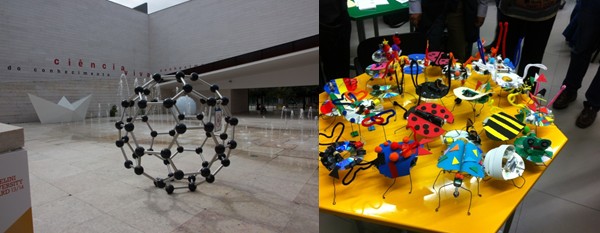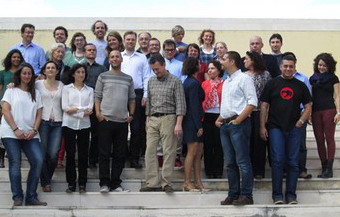How do you design a good scientific exhibition? How can you make an exhibit interactive? And how can you do this at a school, which often has only limited resources available? These questions were the focus of a two-day workshop held by the Institute of Education of the University of Lisbon.
The workshop was part of project IRRESISTIBLE , in which researchers, teachers and the staff of science centres develop teaching materials in what are known as Communities of Learners. The University of Lisbon, one of the 11 project partners, invited delegates from all participating countries to a workshop in Exhibit Design. Some 30 participants, including primary and secondary school teachers, from 10 different countries travelled to Lisbon to attend this crash course in exhibition development.
On the first day, we were welcomed at the University before considering the topic interactivity. Whereas an interactive exhibition implies computers and screens to many people, the Portuguese managed to convince us that wall posters or a set of dice can be equally interactive.
Five examples on the topic geo-engineering (using technological intervention to change the climate) gave the teachers a good idea of how to stage science exhibitions in schools cheaply and easily. Researchers from the University of Kiel also showed us how to and use an IKEA cupboard to put on quick, attractive and cheap exhibitions in schools, in accordance with the EXPOneer principle.

Interactive poster (left) and an IKEA/EXPOneer display cabinet.
On the second day we visited the Pavilhao da Conhecimento (the Pavilion of Knowledge), the science centre in Lisbon. Here we were given a glimpse of the history of the science centre and the organization behind it, Ciencia Viva, as well as a workshop in robot building and a guided tour of different exhibitions. We also discussed the positive and negative aspects of the exhibitions that we had seen. The message that clearly emerged was that simple exhibitions could also be very appealing, interactive and educational.

Pavilhao da Conhecimento (left) and the result of the robot-building workshop.
In short, two intensive but enlightening days, in which the teachers present should have learned a great deal about the possibilities of staging scientific exhibitions at schools. In the coming months, the Communities of Learners in the different countries will start developing exhibitions, so this experience will stand the teachers in good stead.









